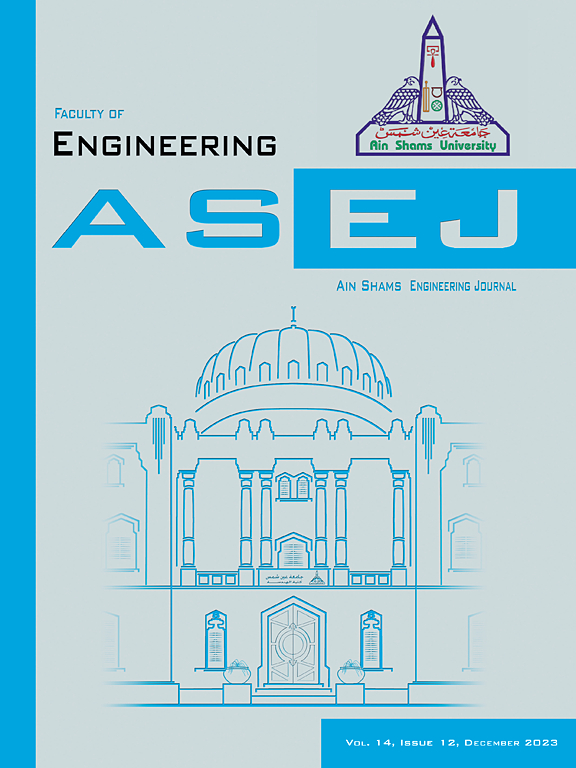四个新和图的零阶一般randiki指数
IF 5.9
2区 工程技术
Q1 ENGINEERING, MULTIDISCIPLINARY
引用次数: 0
摘要
对于分子图,拓扑指数(TIs)被证明是图论和数学化学之间的桥梁,可以理解和预测潜在化学物质的某些性质。在化学图论(CGT)中,对于(分子)图Γ,零阶一般randiic指数被认为是一个突出的综合拓扑指数,表示为Rα0(Γ)。许多重要和有用的指标都是Rα0的特例(Γ)。例如,对于α= - 1, - 12, 2和3,我们分别得到逆度指数(IDI)或修改的总邻接指数,零阶randi指数M1 - 12(Γ),一级Zagreb指数M1(Γ)和遗忘指数F(Γ)。TI Rα0(Γ)在化学中有无数的应用,例如估计交替碳氢化合物的结构依赖于π电子能。在CGT中,图积提供了一个框架,通过在特定的二元操作下组合两个图来生成我们选择的新(分子)图。对于笛卡尔积下的f和图,已经对包括Rα0(Γ)在内的许多ti进行了充分的研究。本文基于张量积导出了新定义的f和图的Rα0(Γ)的精确公式。我们通过各种相关的例子来证明我们公式的准确性和有效性。化学信息学的研究人员可以使用我们的零阶一般randici指数公式进行QSAR/QSPR研究,用于新分子的设计和分析。此外,我们利用我们的结果,为一些一般图族提供了R30(Γ) (F-index)的封闭形式公式。本文章由计算机程序翻译,如有差异,请以英文原文为准。
Zeroth-order general Randić index for four new sum-graphs
For molecular graphs, the topological indices (TIs) proved to be a bridge between graph theory and mathematical chemistry to understand and predict certain properties of underlying chemical substances. In chemical graph theory (CGT), for a (molecular) graph Γ, zeroth-order general Randić index is considered to be a prominent and comprehensive topological index represented as . Many prominent and useful indices are special cases of . For instance, for , , 2, and 3 we get inverse degree index (IDI) or modified total adjacency index, zeroth order Randić index , first Zagreb index , and forgotten index , respectively. The TI has a myriad of applications in chemistry, such as estimating the structural dependence of alternant hydrocarbons on the π-electron energy. In CGT, graph products provide a framework for generating new (molecular) graphs of our choice by combining two graphs under a specific binary operation. Adequate research has been conducted on numerous TIs, including , for F-sum graphs under the Cartesian product. In this paper, we derived the exact formulas of the for newly defined F-sum graphs based on the tensor product. We prove the accuracy and validity of our formulas by taking diverse pertinent examples. Researchers from cheminformatics can use our formulas of zeroth-order general Randić index for QSAR/QSPR studies in the design and analysis of new molecules. In addition, we provided closed-form formulas of (F-index) for some general families of graphs using our results.
求助全文
通过发布文献求助,成功后即可免费获取论文全文。
去求助
来源期刊

Ain Shams Engineering Journal
Engineering-General Engineering
CiteScore
10.80
自引率
13.30%
发文量
441
审稿时长
49 weeks
期刊介绍:
in Shams Engineering Journal is an international journal devoted to publication of peer reviewed original high-quality research papers and review papers in both traditional topics and those of emerging science and technology. Areas of both theoretical and fundamental interest as well as those concerning industrial applications, emerging instrumental techniques and those which have some practical application to an aspect of human endeavor, such as the preservation of the environment, health, waste disposal are welcome. The overall focus is on original and rigorous scientific research results which have generic significance.
Ain Shams Engineering Journal focuses upon aspects of mechanical engineering, electrical engineering, civil engineering, chemical engineering, petroleum engineering, environmental engineering, architectural and urban planning engineering. Papers in which knowledge from other disciplines is integrated with engineering are especially welcome like nanotechnology, material sciences, and computational methods as well as applied basic sciences: engineering mathematics, physics and chemistry.
 求助内容:
求助内容: 应助结果提醒方式:
应助结果提醒方式:


